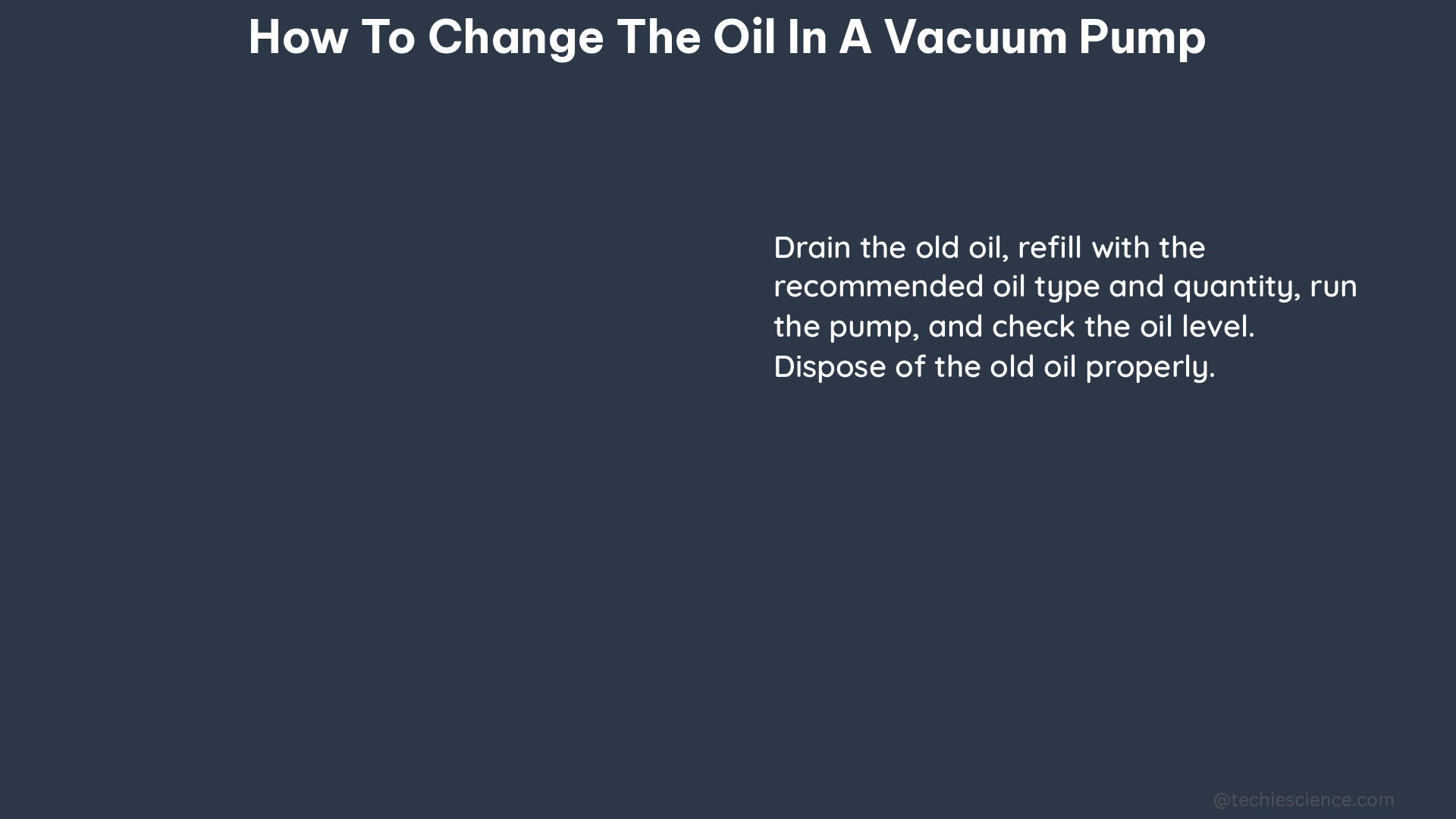Changing the oil in a vacuum pump is a crucial maintenance task that ensures optimal performance and extends the life of your equipment. This comprehensive guide will walk you through the step-by-step process, providing you with the technical details and quantifiable data you need to ensure a successful oil change.
Draining the Existing Oil
The first step in changing the oil in a vacuum pump is to drain the existing oil. This should be done while the pump is still hot, as the heat helps to thin the oil and facilitate a more complete drainage.
When draining the oil, it’s important to let the pump sit for a few minutes to ensure that all the oil has been removed. This is because as the pump cools, the moisture and contaminants within the oil can separate, causing the contaminants to cling to the walls of the pump. If this happens, the contaminants can mix with the new oil as the pump is refilled, reducing the effectiveness of the oil change.
To ensure a complete drainage, it’s recommended to run the pump for 5-10 seconds after the initial draining. This helps to push any remaining oil out of the pump and into the drain pan.
Choosing the Right Oil

When it comes to selecting the new oil for your vacuum pump, it’s important to choose a high-quality, low-vapor pressure oil that is specifically designed for use in vacuum pumps. One such oil is the YELLOW JACKET® vacuum pump oil, which is a mineral-based oil that has been specially formulated and refined to provide optimal performance in vacuum pump applications.
The amount of oil required will depend on the specific model and size of your vacuum pump. As a general guideline, the oil level should be filled up to the center of the sight glass or the specified fill line. It’s important to consult the manufacturer’s recommendations to ensure that you are using the correct amount of oil.
Adding the New Oil
Once you have drained the existing oil and determined the appropriate amount of new oil to add, it’s time to refill the pump. When adding the new oil, be sure to pour it slowly and carefully to avoid spills or splashes.
After adding the new oil, turn on the pump and check the oil level. The oil level should remain below the top of the sight glass. If the level is too high, you can drain a small amount of oil to bring it back down to the proper level.
Changing the Oil Filter
If your vacuum pump has an external oil filter, it’s important to replace it during the oil change process. To do this, use an oil filter wrench to remove the old filter, and then lubricate the rubber seal of the new filter with a small amount of the new oil before installing it.
When tightening the new oil filter, be sure not to overtighten it, as this can damage the filter or the pump itself.
Monitoring the Oil Condition
Regularly monitoring the condition of the oil in your vacuum pump is essential for maintaining optimal performance and extending the life of your equipment. This includes checking the oil color, appearance, and age.
If the oil is observed to be contaminated, if it turns brown and foams, or if any discoloration is noticed, it’s recommended to change the oil. Additionally, if there is condensation present in the pump fluid or if the pump has been unused or stored for a long period of time, it’s a good idea to change the oil.
As a general guideline, it’s recommended to change the oil every 500 hours of operation, or more frequently if the pump is being used in particularly demanding applications.
By following these steps and monitoring the oil condition, you can ensure that your vacuum pump is properly maintained and operating at peak efficiency.
Conclusion
Changing the oil in a vacuum pump is a critical maintenance task that requires attention to detail and a thorough understanding of the process. By following the steps outlined in this guide, you can ensure that your vacuum pump is properly maintained, extending its life and ensuring optimal performance.
Remember, the key to successful vacuum pump oil changes lies in the details. From draining the existing oil to choosing the right replacement, each step is crucial for maintaining the health and longevity of your equipment.
So, whether you’re a seasoned vacuum pump technician or a DIY enthusiast, this guide will provide you with the information you need to tackle this important maintenance task with confidence.
References
- YELLOW JACKET® Vacuum Pump Oil Change Guide
- Step-by-Step Guide to Changing the Oil in Your Vacuum Pump
- Changing Oil with Vac Pump

The lambdageeks.com Core SME Team is a group of experienced subject matter experts from diverse scientific and technical fields including Physics, Chemistry, Technology,Electronics & Electrical Engineering, Automotive, Mechanical Engineering. Our team collaborates to create high-quality, well-researched articles on a wide range of science and technology topics for the lambdageeks.com website.
All Our Senior SME are having more than 7 Years of experience in the respective fields . They are either Working Industry Professionals or assocaited With different Universities. Refer Our Authors Page to get to know About our Core SMEs.